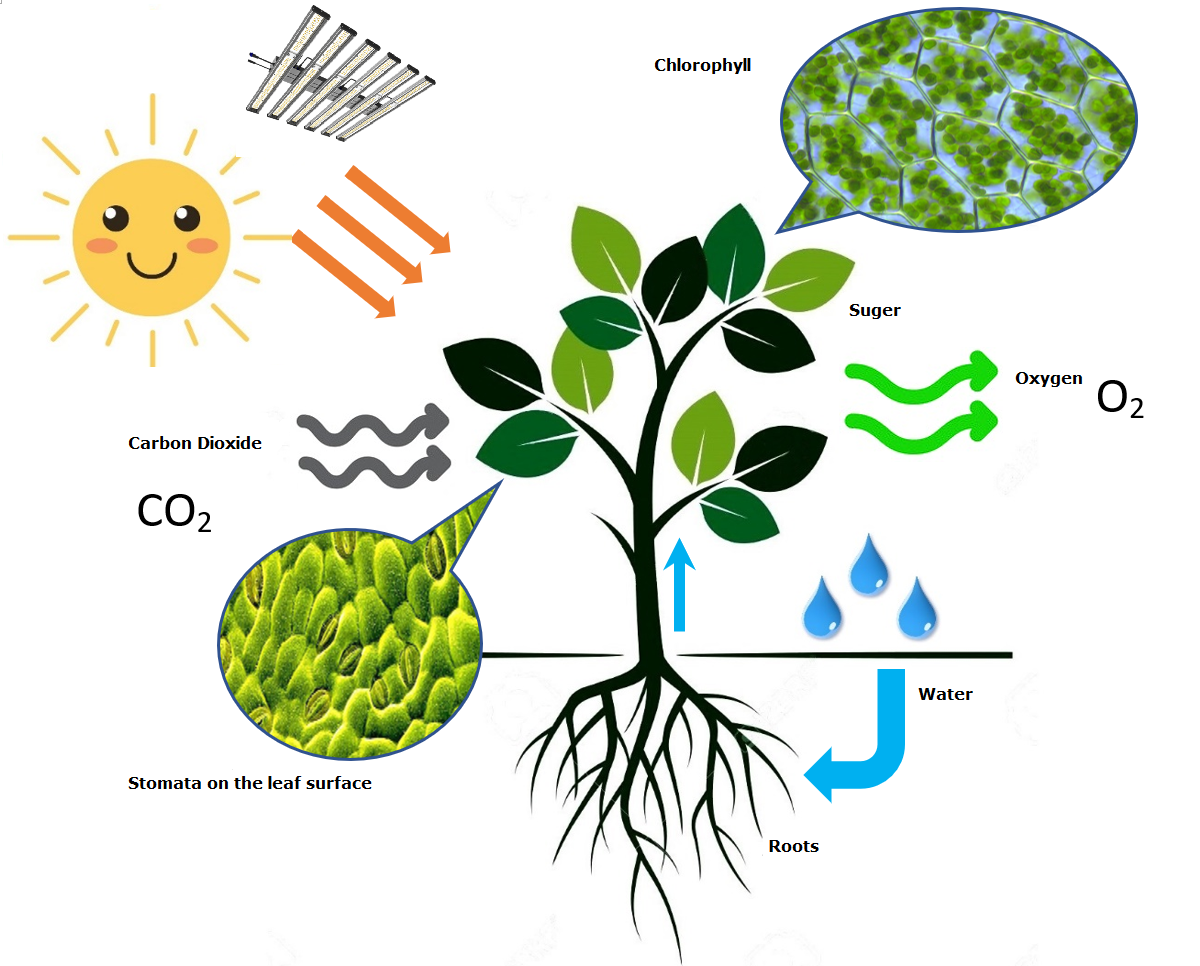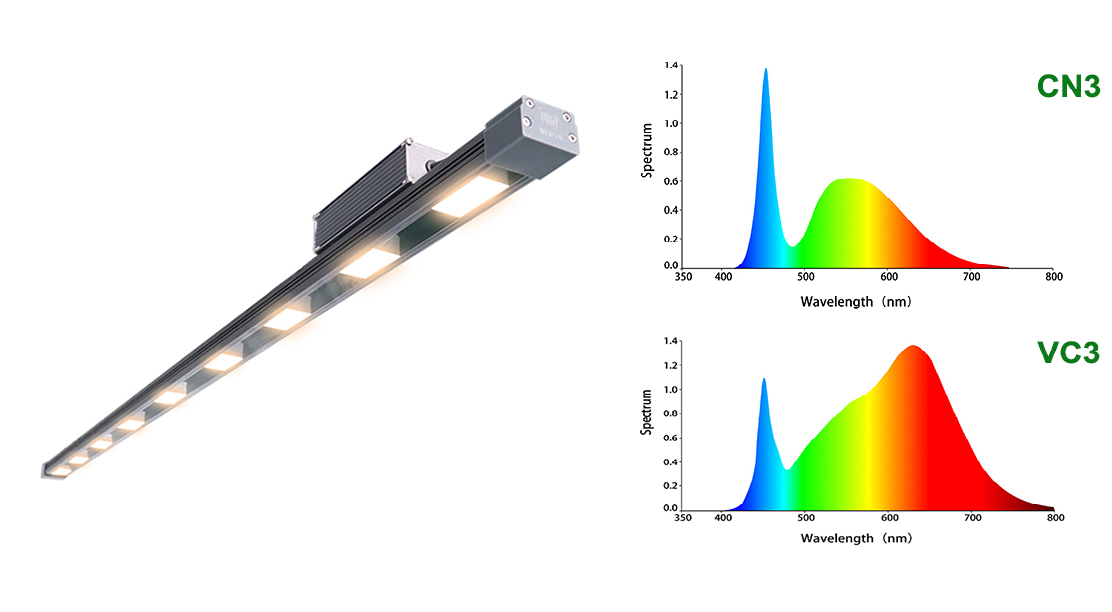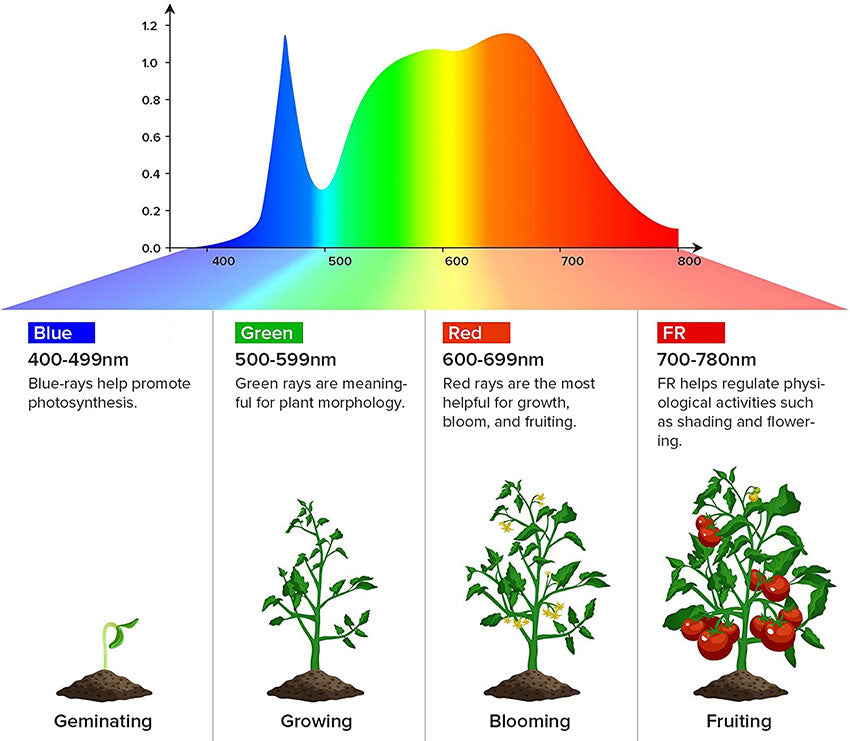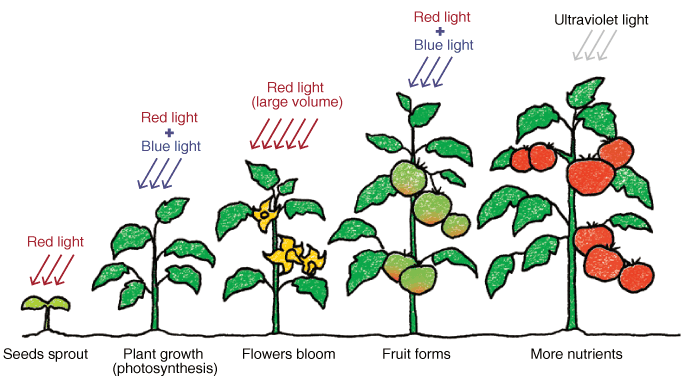As the modern agricultural technology developed, the Light emitting diodes LED technology as the key advancement for improving the potential for horticulture and horticulture ways.

In comparison with previous lighting options,i.e. HPS or CMH, it is more efficient whatever the amount of energy consured and PAR value for plant leaf.
At the same time, it has more outstanding characters,the most of importance factor is flexibility: the emited light compositions can be tailored to meet with the plant requirements, setting the PAR light amount,even working times for different plant varieties and working times. In this way, the plant can absorb the exact light spectrums and lights, promoting their growth.
As you know,Light is the important components of plant growth and also as key forces of plant plant physiology and morphology, also crucial for photosynthesis, the chemical reactions:fixing CO2 for the purposes for food production, as well as environmental promoting workings. To be plant, total including 5 kinds of photoreceptors: Photochromes, phototropins, cryptochromes, flavin-binding F-box protins, and UVR8. the real signal transmition as well as the interactions between different receptors will be more complicable.
The Plants has high rates of plasticity by altering their physiology and developement to adapt to changing environment conditions, especially, it is of essential factors for plant cann’t move to favorable situations.by changing the light spectrum compositions, to adjust or limit the light wavebands proportion for optimising production approved by mimicking environmental stimuli and triggering plant responses are providing the opportunities.
The lights is electromagnetic radiation which is as visible light from wavelength of 400-700nm. Different light wavelength has its function for plant varieties, of course, alonged with plant varieties, growth phases and PAR amount,etc,their reaction for plant plasticity will be difference. For instance, plants grown in red spectrum light will exhibit greater leaf curling, and plants grown with exposure to blue spectrum light will exhibit greater leaf flattening. This may mean that a high rate of blue could make plants better able to utilise light which is unidirectional and only (at least primarily) coming from above, typical for controlled growing scenarios. Of course there are numerous other considerations, and potential ramifications, to consider, but this does at least highlight that factors such as this are key considerations in a controlled environment where the selection of light spectra may mean that the individual responses from the plant may actually make the plant more, or less, suited to growing in that environment.

Here make a breif introduction for different light wavelengths for plant reactions:

Red Light(600nm-700nm): the red light wavelength is the main driver of vegetative growth; that is to say, more leaves and more biomass. However, Although the red light is the most importance wavelength for plant growth and development,howevever, it can’t be in isolation. For example, growing in the absence of other spectra,without blue lights, it will occure a typically unfavorable growth profile.the plant become stretched and tall, with thin leaves.

Blue lights(400nm-500nm): it has a bigger affects for plant morphology. For example, during the plant growth, increasing the ratio of root to shoop, promoting root growth and plant compactness. Also promoting more stomata opening and more stomata conductance and gas exchange--it is also typically considered favorable from a plant health perspective,from the point of controlling environment,it resulting in huger humidity potential.
The Light easily absorbed by plant photo-receptors, as important factor in plant environmental perceptions. For example, increasing the ratio of blue light which convinced plant of more available light overall, and finally change plant behaviour.
Green Light (500-600nm)-- Green lights has a weak ability of absorption in comparison with red and blue wavelength. By increasingly recognized, it is more and more important for overal photosynthesis potential.The green light, its main function is reflection and scattered within leaves and the canopy, increasing the total absorption potential, particularly important in dense-growing scenarios. the ratio of green and blue light also change the morphology.
The Far-Red(700-850nm), also called the super visual lights. The Far-Red lights has not the ability of photosyntehtically active and only weakly drive photosyntehtisis. Usually, by adding the Far-Red lights, and absorbed by phytochrome photoreceptors, it will involve in the regulation of leaf expansion,flowering, internode extension, and the partitioning of resources between organs. It working with red/blue light wavelength, it also make some reverse functions, for example, the Far-Red will lead to higher distribution between roots to shoop in comparison with blue lights; high percentage of Far-red lights, the plant will be higher and stretched, the leaves turn yellow, etc.
The UV spectrums(100-400nm),it is invisible and outside of the PAR wavelengths, influencing the plant development. UV-B has own photo receptors, by adding them, it will affect the growth potential.UV-C, usually, it doesn’t directly perceived by plants, most applied for controlling environments pests and disease.























